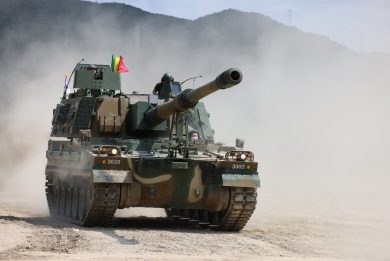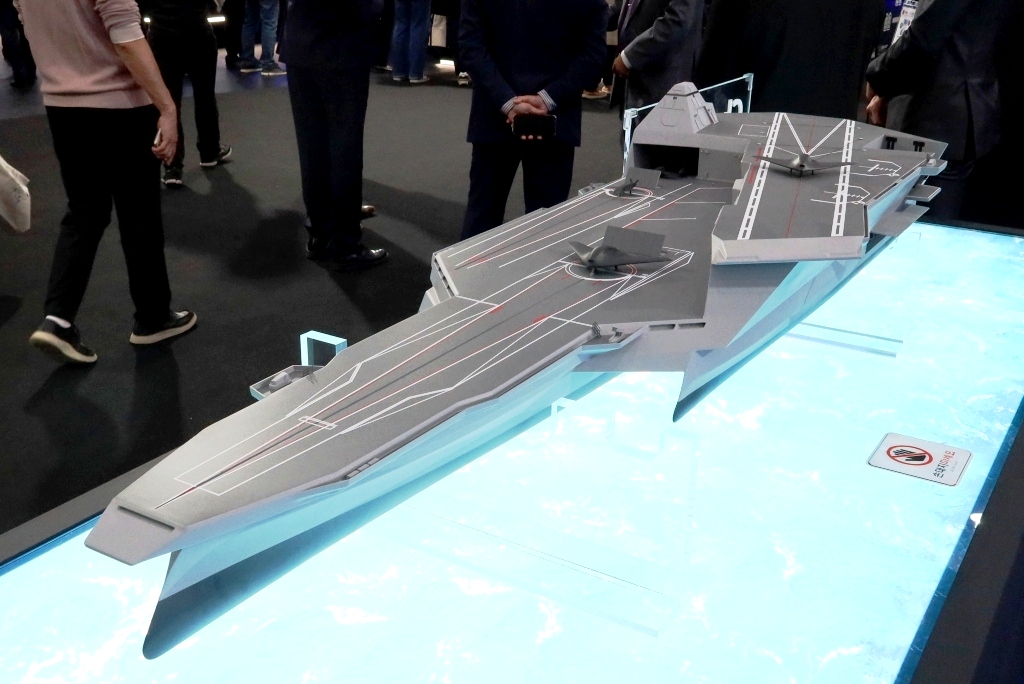
ADEX 2023 – Hanwha unveils an all-unmanned concept carrier
At ADEX 2023 Hanwha exhibited the model of a concept ship, shown last June at MADEX, designed as an unmanned carrier, capable to deploy unmanned air, surface and underwater vehicles
When visiting an Aerospace and Defense Exhibition, the spelling for ADEX, mostly oriented towards aviation and land equipment, writing on naval subjects might seem strange. But what is even stranger is the model exhibited by Hanwha, a futuristic approach to the unmanned naval world.
The “Ghost Commander”, the name says all, is a concept study that gave birth to two ship designs, a bigger one and a smaller one, that in perspective will allow an unmanned ship to deploy air, surface and subsurface unmanned assets to ensure a number of missions without putting at risk human crews.
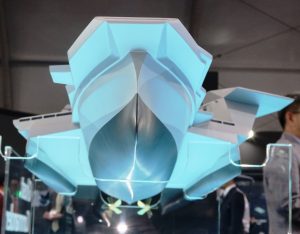
The bigger ship, which eye-catching model was exhibited at the Seoul event, is a 16,000 tonnes hybrid between a battleship and an aircraft carrier, with a length of 200 metres and a maximum speed of 25 knots. The trimaran hull is characterised by an inverted bow, all-electric propulsion being provided electric motors powered by hydrogen fuel cells, a two-pod solution being proposed, each with a five-blade propeller. The main flight deck is coaxial with the hull and runs along the whole ship, a takeoff runway being also coaxial while a second much shorter runway is located starboard, slightly angled to the right. Both are used only for take-off operations, as the stern superstructure does not allow landings. While the longer runway is used to launch bigger UAVs, the starboard one is reserved to smaller airframes.
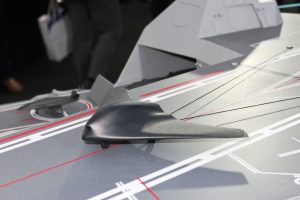
As for landing, a very short runway with arresting cable is located on top of the superstructure, angled left; an elevator on the port side allows to lower the landed UAV in the hangar where a robotic system will allow automatic turnaround operations to get the airframe ready for the next mission. On that same flight deck, on the port side, we could see the landing spots for vertical take-off and landing UAVs.
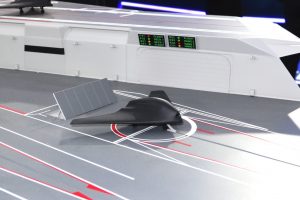
Being a concept ship many solutions might change, however catapult-assisted take off and arresting gear landings seem to be the current choice, although much will depend on UAV performances. Six long-range reconnaissance UAVs with a nearly fly wing configuration are hosted o the ship, the same number of shorter rage airframes being also embarked. For offensive and defensive purposes a total of 48 vertically launched systems, with a mix of loitering munitions and antidrone UAVs, compete the flight detachment.
Transversally to the ship, a rail system allows to carry unmanned surface vessels (USV) at the launch station, where a sort of cage takes the system and lowers it at sea. Two types of USV will be embarked, six specialised in reconnaissance missions, six other being multipurpose boats. No more details were available on USVs.
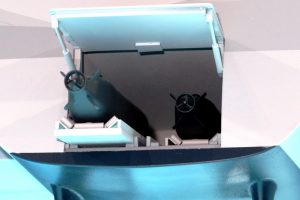
Another rail allows bringing astern unmanned underwater vehicles (UUV) to be launched. The ship hosts eight surveillance UUVs, also defined MRXUUVs, MR standing for multirole as they are reconfigurable according to the mission, that can be anti submarine warfare (ASuW) or mine warfare (MIW). Around 24 metres long, with a 3.0 metres diameter, it has a weight of around 50 tonnes. Propulsion is provided by a fuel cell air independent propulsion system and a lithium ion battery pack that powers the electric motor activating a ducted blade propeller that ensures an 8 knots maximum speed. It is fitted with flank array sonars and with a forward looking sonar. Free flooded rings complete its sensors suite, while a mine module allows it to be used for offensive or defensive mine operations. The MRXUUV is fitted with a hoistable mast that carries electro-optic sensors and antennas for surface and satellite communications.
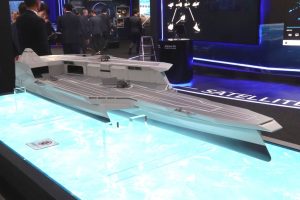
The ship also hosts three Combat XLLUVs. Its dimensions and weight are not very dissimilar from those of the MRXUUV, with a 2.5 metres diameter and a 23 metres length, weight remaining the same at 50 tonnes; only the maximum speed is considerably higher, up to 15 knots. Its stealth characteristics are improved thank to the low noise propeller, a minimal magnetic signature and the strict control on underwater radiated noise. It can be fitted with flank array sonar and multiple aperture sonar and can be armed with torpedoes and mines. It can be equipped with a mast dedicated to a LEO (Low Earth Orbit) satellite antenna as well as with a second mast for other equipment, for example electro-optic, both being foldable. The Combat XLLUV can be tasked for numerous missions, antisubmarine, antisurface, mine warfare as well as counter-mine operations.
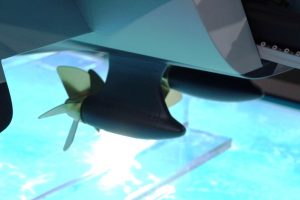
The smaller ship part of the Ghost Commander concept is also based on a trimaran hull and has a 5,000 tonnes displacement, is 130 metres long and can reach 25 knots, the propulsion plant remaining similar athough with a lesser power. Due to the central superstructure it has only a stern flight deck and therefore can only operate vertical take-off and landing UAVs. The ship carries four such UAVs, while a 24 cell system allows the vertical launch of loitering munitions and antidrone UAVs, half the load of the bigger ship. As for USVs and UUVs, the smaller ship capacity is for six each of the multirole assets. According to images provided in a presentation, the 5,000 tonnes ship will also be armed with a gun.
EDR On-Line understood that although the final target is to have a fully unmanned solution, intermediate steps might see the presence of a much reduced crew, awaiting some technologies to be fully developed. As for the timetable, a first prototype is foreseen in 10-15 years. And it might look pretty different from the model seen at ADEX, as concept studies tend to evolve pretty quickly.
Photos by P. Valpolini



